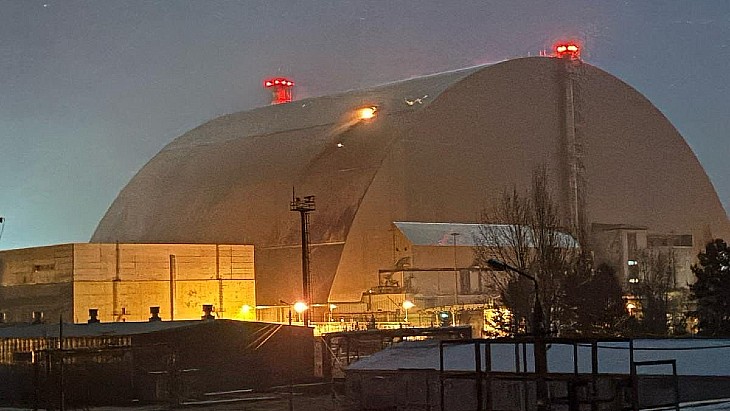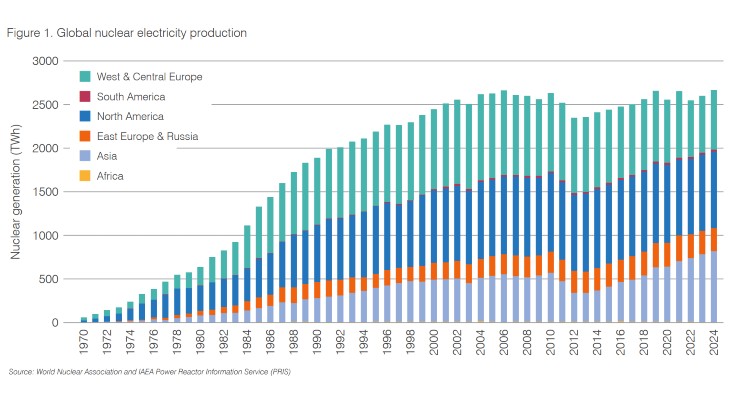More than 600 power plants including more than half of US nuclear reactors may be forced to retrofit once-through cooling systems with cooling towers under a proposed rule issued by the country's Environmental Protection Agency (EPA).
The EPA has proposed standards under the Clean Water Act to follow through on a recent settlement agreement with environmental groups whereby EPA agreed to issue regulations to reduce injury and death of fish and other aquatic life caused by cooling water intake structures at power plants and other industrial facilities. The EPA said that its proposal would "establish a common sense framework, putting a premium on public input and flexibility."
There are three components to the proposed regulation. Firstly, existing facilities that withdraw at least 25% of their water from an adjacent waterbody exclusively for cooling purposes and have a design intake flow of greater than 2 million gallons (7.6 million litres) per day would be subject to an upper limit on how many fish can be killed by being pinned against intake screens or other parts of the facility (impingement). The facility would then determine which technology would be best suited to meeting this limit. Alternatively, the facility could reduce its intake velocity to 0.5 feet (15 centimetres) per second - a rate at which most fish can swim away from the water intake. The EPA estimates that more than half of the facilities that could be impacted by this proposed rule already comply with the proposed standard.
Secondly, existing facilities that withdraw very large amounts of water - over 125 million gallons (470 million litres) per day - would be required to conduct studies to help their permitting authority determine whether and what site-specific controls, if any, would be required to reduce the number of aquatic organisms sucked into cooling water systems (entrainment). This proposal includes establishing a public process, with opportunity for public input.
Thirdly, new units that add electrical generating capacity at an existing facility would be required to add technology that is equivalent to closed-cycle cooling. This can be done by incorporating a closed-cycle system into the design of the new unit, or by making other design changes equivalent to the reduction associated with closed-cycle cooling. The EPA said that closed-cycle cooling systems (cooling towers) are the most effective at reducing entrainment.
The EPA said that the proposed rule covers some 1260 existing industrial facilities that each withdraws at least 2 million gallons (7.6 million litres) per day of cooling water. About 590 of these facilities are manufacturers and the other 670 are power plants.
Nancy Stoner, acting assistant administrator for EPA's Office of Water, commented: "This proposal establishes a strong baseline level of protection and then allows additional safeguards for aquatic life to be developed through a rigorous site-specific analysis, an approach that ensures the most up to date technology available is being used. It puts implementation analysis in the hands of the permit writers, where requirements can be tailored to the particular facility."
| "Absent measurable benefit, this action will only incur higher costs for customers and potential for unintended adverse environmental consequences." Marvin Fertel President and CEO, Nuclear Energy Institute |
The proposed standards are open for public comment for a period of 90 days from its publication in the Federal Register. The administrator must take final action by 27 July 2012.
"The public's comments will be instrumental in shaping safeguards for aquatic life and to build a common sense path forward," Stoner said. "The input we receive will make certain that we end up with a flexible and effective rule to protect the health of our waters and ecosystems."
Nuclear plants
US industry body the Nuclear Energy Institute (NEI) estimates that the requirement could affect 62 of the 104 nuclear power reactors in the USA.
NEI president and CEO Marvin Fertel said, "The EPA proposed rule is very detailed and will be studied closely. However, a one-size-fits-all approach to environmental issues isn't in keeping with sound scientific analysis and will have severe and unnecessary regional economic impacts. No two power plant sites are the same and land available at many of these plant sites is unsuitable to building cooling towers."
He added, "A blanket requirement to force the installation of cooling towers is unnecessary." Fertel noted, "Numerous scientific studies demonstrate that there has been no impact on the overall health of the fish populations near nuclear power plants. These include independent studies that have been reviewed and accepted by state environmental permitting agencies. The bottom line is that if, after decades of operation, there is no detrimental impact to the overall aquatic environment near power plants, the industry should not be forced to retrofit cooling systems."
With regards to power uprates at existing plants, Fertel warned, "The EPA's rule could inhibit the industry's ability to make upgrades to produce additional electricity from existing reactors. More than 5000 MWe of power uprates have been implemented at nuclear energy facilities since the early 1990s, and another 3000 MWe are slated for [regulatory] review by 2014."
Three US states - California, New York and New Jersey - have already introduced draft policy requiring certain industrial facilities, including nuclear power plants, to construct cooling towers.
Researched and written
by World Nuclear News












